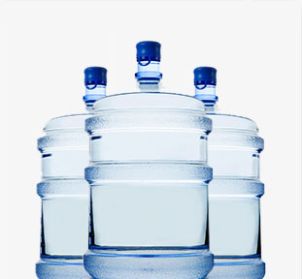
How to Remove Lead From Your Water

Odorless, colorless and boasting a particularly negative reputation, lead is a kind of heavy metal that may occasionally find its way into the drinking water supply. Fortunately, you don’t have to address this potential contaminant on your own.*
In fact, most DIY solutions — including boiling and bleaching — won’t remove lead from water. Instead, you’ll need a solution such as a reverse osmosis (RO) water filtration system certified for lead reduction.
Here’s how it works and more about what you need to know.
How to Remove Lead From Your Tap Water
Don’t panic if you find out that your water system has a lead contamination problem. Your first priority is to make a plan and establish short-term habits that will reduce lead exposure until you can implement a more permanent solution.
Here’s what to do:
Choose an RO Water Filtration System
Standard water pitchers, fridge or faucet filters often don’t have the filtration capabilities you need in this situation. That’s why a comprehensive solution like a reverse osmosis water filtration system is often the best way to go. It’s important to make sure the system you select is specifically certified to address lead in water, but it should do a lot more. Good RO systems can address dozens of other contaminants such as arsenic or mercury, all while handling taste, odor and appearance issues as well.
Until you get your system, you’ll need to use other drinking water solutions.
Find Another Water Supply
If possible, keep a supply of bottled water on hand. Try to save this water for drinking, brushing your teeth and any strictly necessary cooking or health needs.
These other tasks shouldn’t require bottled water:
- Laundry: Most clothes won’t absorb lead from water, so you can wash them as usual.
- Dishes: Glass, metal and porcelain can be washed in lead water — just dry them thoroughly before use.
- Baths and showers: Because your skin doesn’t absorb lead, both adults and children are generally safe to bathe in lead water until the problem is addressed. Ensure that kids don’t swallow water while washing up.
- Pet water: While lead poisoning is possible in pets, it’s rare and varies highly between species. Keep an eye out for any signs of potential health issues, but remember to prioritize your own drinking and health needs.
Let the Faucet Run
Try to let your tap water run for a while before using it the tasks you can still do above. If you don’t have lead piping in your house, you should wait for about 60 seconds; if you do, wait five minutes.
To avoid water waste, collect water for pet bowls or plants. You can also run the dishwasher, laundry machine or shower to help flush out your pipes.
Use Cold Water
It can quickly get expensive to rely on single-use water bottles for drinking and cooking. If you have to use your home’s tap, make sure you only use cold water. Relying on boiled or hot water can actually increase your lead exposure.
Testing for Lead Contamination
Remember that lead is invisible, odorless and tasteless. That’s why the only way to know for sure what’s in your water supply is to have a professional water test and consultation.
Certified Lab Testing
The best approach is to have testing done professionally by a certified lab, like Culligan’s IL EPA-certified lab. In this process, a local water specialist will come to your home and collect water samples from your tap. They might have some tips for using your water or pipes in the meantime. When they have everything they need, they’ll send the samples to the lab, which can identify lead and other contaminants you may be concerned about. Once the results are in, your water specialist will talk through what they mean and what kind of water treatment system might be best for you.
Free, In-Home Testing
If your local water expert is going to be at your tap anyway, it makes sense to have them perform Culligan’s free, in-home test, too. This process can find chlorine, iron, hard water and other potential issues. Better yet, you can have the results of this free check in about 30 minutes.
DIY Testing
There are DIY lead test kits available at many stores, but they may not be as promising as they seem. Remember that you’ll have to take samples and interpret data yourself — and, if there are any limitations in the test equipment or even the smallest procedural error, you could end up with inaccurate results. For these reasons, it’s generally recommended to have a professional water test instead.
What To Know About Lead
Although lead has a bad and sometimes well-earned reputation, it’s important to know what you’re actually dealing with when this potentially harmful contaminant enters your water system. Brush up on these lead facts:
Sources of Lead
Although lead is found throughout nature in the Earth’s crust, soil, air and more, it’s perhaps better known for its time as a component of paint and gasoline. It’s still around in certain consumer products, such as car batteries and some weight sets, but it’s far less popular now that its health effects are better understood.
That said, lead still plays a significantly negative role in human and environmental health. Lead-based paint and lead-contaminated dust are the most common sources of lead poisoning, but contaminated soil, workplace activities, imported items and industrial activities may also introduce this heavy metal into your life.
Aside from having professional water tests, choosing RO water filter solutions and learning about your home’s pipe structure, you should also try identifying other sources of lead. For example, if you live in an older home, you should be careful about your interior paint: Don’t scrape, peel or cover it yourself, and make sure children don’t consume flakes.
How Lead Enters Drinking Water
The most common way drinking water is exposed to lead is through a lead service line, other lead pipes or aging plumbing infrastructure. A holdover from the days when the dangers of lead weren’t as well known, lead piping is still present in some older North American homes — and as the infrastructure ages and becomes corroded, it can potentially cause contamination. Other components, such as lead-lined water tanks or anything soldered with lead, can also introduce this metal into the water supply.
It’s important to note that, because of this, both well and city water can have lead. Even if the water is fine when it leaves your well or a local treatment plant, it could be exposed to lead when passing through your pipes.
Health Effects of Lead
Lead can have negative impacts on most of the human body. In fact, there’s no safe concentration of lead in blood. To make matters more complicated, lead is dangerous at every stage of life.
Unborn babies can be impacted by the contaminant, risking damage to the brain, kidneys or nervous system. They may also be born too early or too small.
Young children are particularly vulnerable because their bodies absorb up to five times more lead than adults. Even a low lead level can cause behavioral issues, hyperactivity, learning problems and more, while some cases result in seizures and death. For adults, negative effects can include cardiovascular effects and reproductive problems.
To put all those symptoms into perspective, consider this: The World Health Organization (WHO) estimates that lead exposure is responsible for 21.7 million years lost to disability and death globally.
Keep Lead Away From Your Drinking Water
Your well or city water system may be perfectly managed, but lead can still leach into your water supply from your home’s plumbing. You won’t even know it’s there because it can’t be seen, tasted or smelled. That’s why it’s important to have regular water tests and use water treatment systems designed to tackle the toughest contaminants.
Take control of your water quality today. Schedule your free, in-home consultation to learn more about your options for lead management.
*Contaminants may not be present in your water.
Related Articles
FAQ: Are There PFAS in Bottled Water?
8 min read
What is PFAS Water Testing?
11 min read
PFAS Regulations in the U.S.
15 min read
Find A Location Near Me

Schedule Your Free
In-Home Water Test
Get better water in your home by scheduling an appointment with your local Culligan Water Expert.
Discover More
See All Articles

FAQ: Are There PFAS in Bottled Water?
Although drinking water quality has always been important, it’s a particularly hot topic these days — especially as researchers learn more about PFAS, sometimes called “forever chemicals.” These substances have […]
8 min read

Explore

Explore
Our Products

Water Softeners
With any of our soft water systems, get more out of your water-using appliances while spending less on energy and detergent.
View Products

Water Delivery
There’s never been a better time to enjoy the convenience of scheduled bottled water deliveries from the Culligan® Water Experts
View Products

Water Filtration Systems
Culligan's water filtration systems have improved water quality for thousands of families worldwide.
View Products
